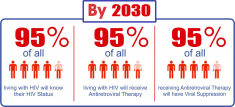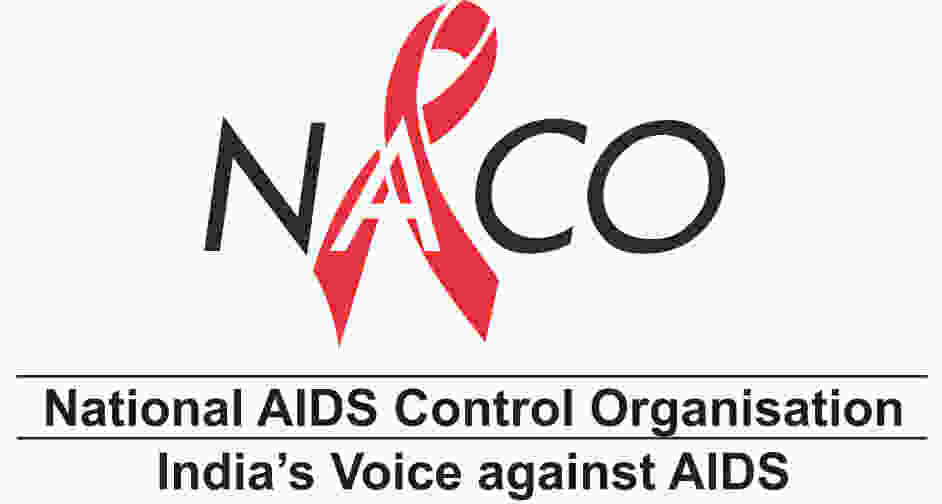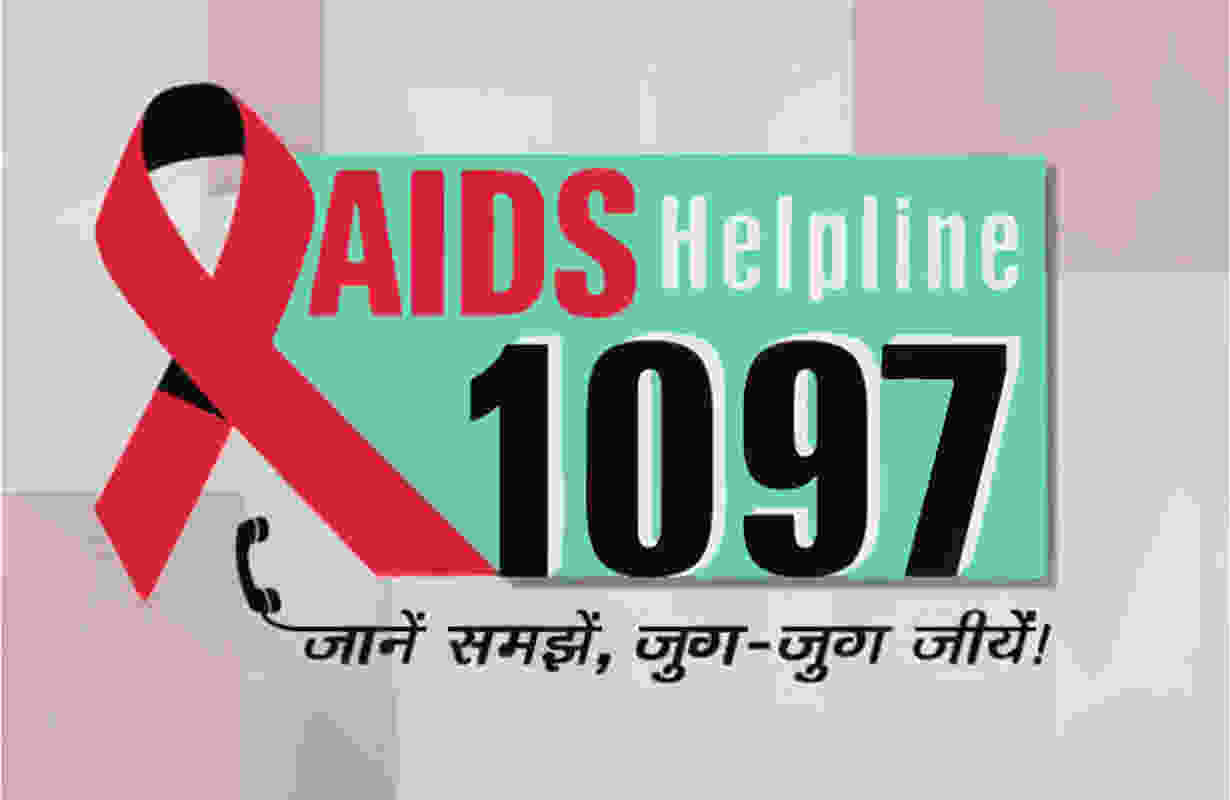FAQS
1. What is HIV? What is AIDS? How does one get HIV infection?
-
HIV (Human Immunodeficiency Virus) is a virus that infects humans and weakens their immune system. As a result, the person loses his ability to fight against infection and becomes susceptible to a number of diseases.
-
HIV transmission can occur in the following ways:
- ⬥ Having unprotected (without condom) sex with HIV infected partner or with multiple partners (whose sexual history is not known).
- ⬥ From infected pregnant woman to her child.
- ⬥ Through transfusion of infected blood and blood products.
- ⬥ Through infected needle and syringes (commonly seen in drug users who share the needles and syringes).
-
The body fluids proven to spread HIV are blood, semen, vaginal fluid, breast milk andother body fluids containing blood. Some other body fluids that may transmit the virus where healthcare workers (doctors, nurses, lab technicians, attendants) need to be careful are cerebrospinal fluid surrounding the brain and the spinal cord, synovial fluid surrounding bone joints & amniotic fluid surrounding a fetus.
-
Unprotected Peno-Vaginal sex:
a. The virus present in the semen of the HIV infected man can enter through ulcers (Injury) in mucosal lining of the vagina and infect the woman.
b. he virus present in the vaginal fluid of the HIV infected female can enter through the lining of urethra at the tip of the penis or through small cuts or open sores on the penis and infect the male.
Due to the larger surface area and thin delicate mucosal lining of vagina, male-to-female HIV transmission during vaginal intercourse is significantly more likely than female-to-male HIV transmission.
Unprotected Anal Sex :The virus present in the penetrating (‘top’) partner semen can be transmitted to the receptive (‘bottom’) partner through the mucosal tissues in the anus that gets easily damaged during anal intercourse & vice versa. Risk of HIV transmission is not necessarily reduced if there is no ejaculation as pre-ejaculate (pre-cum) can contain high amounts of HIV and can result in transmission during anal intercourse. It is recommended to use latex condom and water-based lubricant to reduce the chances of condom tearing.
-
AIDS stands for Acquired Immune Deficiency Syndrome. It is the last stage of HIV infection where the body can no longer defend itself & becomes susceptible to various diseases. It results in death of the patient. Proper & continuous Anti-Retroviral Treatment (ART) can improve& prolong the life of an HIV Infected Person.
-
HIV is the virus that can infect a human body. A HIV infected individual is said to be HIV positive & will remain one throughout his life. Such individuals may appear healthy and not exhibit any symptoms. In the advanced stage of HIV infection, the immunity of the HIV infected individual lowers considerably. S/He becomes more susceptible to various infections and diseases like TB, fungal infection, Herpes, cancer, etc. This syndrome or set of conditions is known as AIDS.
-
Yes, any person infected with HIV can pass on the infection even if he or she
1. has no symptom (asymptomatic)
2. has not been diagnosed as HIV positive but might be in Window Period
3. Is undergoing treatment for HIV
4. Has an undetectable viral load as it can be transmitted to another person -
HIV attacks the CD4 cell (a type of white blood cell), which protects our body from infection. The HIV genetic material is released into the CD4 cell and integrates with the CD4 cell DNA and destroys the CD4 cell. The virus multiplies and infects other healthy CD4 cells and destroys them. This leads to lowering of CD4 cells and weakening of the immune system and makes the person susceptible to a number of diseases.
-
The window period represents the period from the time when a person first gets infected with HIV till the detection of HIV antibodies in the blood. Commonly used tests for HIV infection look for presence of HIV antibodies which may develop within 3- 6 months after infection. Therefore, it is recommended that a person indulging in high risk behavior and with a negative test report needs to repeat the test after 3-6 months.
-
Having unprotected sex with multiple partners, commercial sex workers, indulging in unprotected homosexual activity and sharing needles & syringes with infected drug users are all considered as ‘high risk behavior’.
-
Yes, if doctors, dentists and other health care professionals do not follow Universal Safety Precautions. One should insist on use of disposable needle and syringes during any injection or procedure & enquire if the equipments are sterilized.
-
HIV can be divided into two major types HIV type 1 (HIV-1) and HIV type 2 (HIV-2). A person infected with HIV-1 is said to be positive for HIV-1 and person infected with HIV-2 is said to be infected with HIV-2.
HIV-1 is the predominant type and is easily transmitted as compared to HIV-2. In HIV-2 the period between initial infection and illness is longer. HIV-1 has 4 known strains -‘M’, ‘O’, ‘N’ and ‘P’. ‘M’ or major strain is responsible for majority of the infections and has 9 different subtypes.
-
There are 2 types of HIV - HIV type 1 and HIV type 2. It is possible for a person to get infected with both types of HIV simultaneously or super infected with subtypes of HIV-1 & HIV-2.
2. Risk of HIV Infection with various behaviors
-
Yes, having sex with a HIV infected person or a person whose HIV status is not known, puts one at risk for HIV even with a single act of unprotected sex.
-
Yes. This is because one may not be aware of the sexual activity of the partners involved and the partner could be infected with HIV or other STDs (sexually transmitted diseases). The risk can be avoided by being faithful in a relationship with single uninfected & equally faithful partner.
-
Yes, correct and consistent use of condom during vaginal, anal, or oral sex reduces the risk of HIV infection.
-
If both partners are HIV positive then condom should be used by only one partner. Both male and female condoms offer the same level of protection against HIV. Male and female condoms should not be used at the same time.
-
No, douching after sex does not provide protection against HIV transmission because semen enters the cervix almost immediately after ejaculation. Douching can disturb the normal flora of the vagina & makes a person more susceptible to infections including sexually transmitted diseases (STDs) & HIV.
-
Oral sex involves stimulating the partner’s genitals with mouth, lips or tongue. Though it is considered a low risk activity, infection can occur when there are ulcers/cuts in the mouth and the infected partner’s semen or vaginal fluid enters the mouth.
-
Oral sex can be made safer by using a latex barrier. While performing oral sex on a male it is recommended that the male partner wears condom. In case of oral sex, performed on a woman, the female partner should use female condom or male partner should use dam which is a thin square of latex.
-
The only effective way to prevent sexual transmission of HIV is through abstinence – avoiding all vaginal, anal, oral sex or by having single faithful uninfected sexual partner.
-
No. Unless one partner is infected and both partners have ulcers/cuts in their mouth and there is blood-to-blood contact.
-
No. One cannot get infected with HIV from any of the above mentioned methods.
-
Yes, one can get HIV if the equipment used for tattooing and ear piercing is not properly sterilized.
-
HIV virus cannot survive outside the human body for long. Therefore, HIV cannot be transmitted through food, water, or air, or by touching any object that was handled by a HIV infected person.
-
No. Even if the food contains small amounts of HIV-infected blood, it gets destroyed when exposed to air or heat during cooking.
-
No. HIV virus is not known to survive or multiply in mosquitoes.
-
The infection risk can be reduced by always using new needles & syringes and not sharing them. The best option of course would be to refrain from drug abuse.
-
Yes, Most workers face no risk of getting the virus while doing their work. The virus is mainly transmitted through the transfer of blood or sexual fluids. Since contact with blood or sexual fluids is not part of most people's work, it is safe to work with HIV infected person.
-
Doctors, dentists, nurses, laboratory technicians and staff who come in contact with HIV infected samples like blood, body fluids are at risk. One can protect oneself by taking universal safety precautions like wearing gloves, lab coats, washing hands before and after all medical procedures, sterilizing equipment’s, following proper bio- medical waste disposal methods.
-
No. It is very unlikely that a person would get HIV from a human bite. Transmission of HIV occurs by direct blood-to-blood contact and not by exchanging saliva. To pass the virus, the infected person need to have ulcer or (injury) in his /her mouth and ulcer or injury in the skin of the other person
3. HIV Testing
-
One can get tested for HIV by blood test at any ICTC (Integrated Testing and Counseling Centre) located in Government and Municipal hospitals and in Maternity Homes. These centers are also known as ‘Shakti Clinic’.
-
HIV testing in Shakti Clinic is done free of cost.
-
Any individual wanting to undergo HIV testing can directly walk into Shakti Clinic. There the individual undergoes:
Pre - test counseling - The counselor will provide general information about HIV/AIDS & will ask few questions to understand the source of infection if any.
Testing - A written consent will be taken from the individual and blood sample will collected by the technician. The sample will be tested for presence of HIV antibodies and the result will be informed to the individual by the counselor.
Post Test Counseling- All persons who have undergone the test will be given information on life style changes to be adopted to reduce the risk of HIV infection and transmission. In addition, individuals who test positive for HIV will be linked to nearby ART (Anti Retroviral treatment) centre for further management. -
A ‘positive’ result means the person has antibodies against HIV and can pass on the infection to others through routes described earlier.
-
Yes. The test results are only disclosed to the person undergoing the test. It is not shared with family or friends of the person undergoing the test.
-
A ‘negative’ result means antibodies against HIV are not present but it could also mean that the person is in the ‘window period’. If the person has indulged in high risk behavior then it is advisable to repeat the test after 3-6 months.
-
Different tests available for HIV are :-
ELISA and Rapid Test - which detect for the presence of HIV antibodies.
Western blot - detects HIV antibodies and is a confirmatory test.
DNA PCR & viral load - are HIV virus detection tests. -
If you are below 18 years and need to get tested for HIV, you need to be accompanied by a parent/guardian.
4. Treatment for HIV/AIDS
-
All people living with HIV (PLHIV) are started Anti-Retro Viral Therapy, regardless of CD4 count, clinical stage, age or population, after routine investigation and preparedness counseling.
-
Antiretroviral drugs are used in the treatment of HIV infection. The treatment is a combination of several ARV drugs & acts by suppressing rate of HIV multiplication in the body. This reduces the number of HIV in the body which results in improved immune status & helps a person to live longer.
-
No, there is no cure for HIV or AIDS. The medicines used in ART help to control the infection & allow people with HIV and AIDS to live longer & healthier life.
-
CD4 cell count and viral load provide information regarding immunity of an infected person and severity of HIV infection respectively and help the doctor to take decision about starting the ART.
-
ART is to be continued for life. Stopping or taking irregular treatment will make the virus resistant to drugs and render the treatment ineffective. Therefore, it is necessary to stick to the drug regimen as advised by a qualified doctor.
-
If you are HIV positive and do not have any signs and symptoms of any disease, still you need to register at any ART center for regular CD4 monitoring and counseling. You will be provided with antiretroviral medications & other drugs as per the doctor’s advice.
-
Monitoring of ART, includes CD4 count and basic lab investigations & is carried out regularly by a qualified doctor. It is necessary to review the success of therapy and check for side effects. If there is further reduction in CD4 count or increase in viral load, or presence of side effects, the drug and the dose may be changed accordingly.
-
No, ART does not cure HIV disease but controls disease progression by inhibiting the HIV virus replication process. This results in improved CD4 count and thus improves the immune status of the infected person.
-
Yes, even though the blood tests show very low levels of HIV virus, it is not totally eradicated from the blood. A HIV positive person can always infect others and therefore should always take appropriate precautions.
-
No, there is no vaccine to prevent HIV infection or AIDS.
5. Living with HIV
-
Viral load is the amount of HIV in the blood of someone who has HIV. Taking HIV medicine (called antiretroviral therapy or ART) as prescribed can make the viral load very low—so low that a test can’t detect it (called an undetectable viral load). People with HIV who take HIV medicine as prescribed and get and keep an undetectable viral load have effectively no risk of transmitting HIV to an HIV-negative partner through sex.
-
Some people who take HIV medicine daily can get an undetectable viral load very quickly, but it can take some people up to six months. The only way to know if you are undetectable is by getting your viral load tested.
-
National Operational Guidelines for Viral Load (VL) Testing :
Patient Group Timing for Routine Viral Load test First line patients - • For existing patients, testing should be done once every 12 months after initiation on ART
- • For new patients, VL test should be conducted at 6 months and 12 months from the date of ART initiation in first year, and once every 12 months thereafter.
Second / Third line patients - • For existing patients, testing should be done once every 6 months after initiation on ART
- • For new patients, VL testing should start at 6 months after initiation of ART and conducted every 6 months thereafter
-
CD4 tests measure the number of CD4 T-cells in the blood to gauge the strength of the immune system in the presence of HIV infection.
The viral load test measures the number of virus particles in the blood directly. A low viral load indicates that HIV is not actively reproducing and that the immediate risk of disease progression is low. A high viral load means the virus is active and the infection will progress. The viral load test is a more reliable indicator of viral activity than the CD4 test and, as such, a more reliable indicator of disease progression.
-
In addition to antiretroviral drugs the following factors play an important role in leading a healthy life with HIV.
- Eating home made fresh nutritious food.
- Taking vitamins as directed by a doctor or nutritionist.
- Avoiding alcohol, cigarettes, tobacco and other harmful substances.
- Regular exercise getting enough sleep.
- Stress management.
- use of male or female condom every time during vaginal, anal & oral sex
6. What are sexually transmitted infections/diseases?
-
Sexually transmitted infections/diseases (STIs/STDs) are diseases transmitted from one person to another during an unprotected sexual intercourse. These infections may be spread through vaginal, anal & oral sex. These are also known as venereal diseases.
-
Signs and symptoms of STIs are:
- ⬥ Unusual or foul smelling discharge from vagina/penis/anus.
- ⬥ Burning or itching around vagina or penis or in groin.
- ⬥ Burning pain and increased frequency in passing urine.
- ⬥ Sores, boils, blisters or warty growth in or around sex organs or in mouth or around anus.
- ⬥ swelling in the groin
- ⬥ pain in lower abdomen in female along with cervical discharge and low grade fever
- ⬥ painful scrotal swelling in male along with burning in urine and urethral discharge.
-
Sexually transmitted infection (STI) means the patient is suffering from various infections like Syphilis, Gonorrhea, Chlamydia, etc. but does not exhibit signs & symptoms and appears healthy. In sexually transmitted disease (STD), the patient complains of genital discharge, genital ulcer, swelling in the groin, burning while passing urine etc. and needs treatment. These infections become chronic without treatment and unknowingly transmit the infection to others by sexual contact.
-
Sexually transmitted diseases (STDs) are infections passed from one person to another during sexual contact. A person with STD may have genital ulcers/blisters and genital discharge in some cases. This increases the risk of getting HIV infection 5 – 10 times during unprotected sexual activity with HIV infected partner. Effective complete treatment of STDs with the use of condom reduces the risk of HIV transmission by 50%.
-
STD syndrome is a combination of symptoms with which patient is suffering and signs examine by doctor typically associated with the sexually transmitted microorganisms. Syndromic case management is to identify the syndrome correctly and treat the patients immediately accordingly with a specific color coded drug kits along with counseling, partner management and condom promotion.
7. HIV transmission from mother to baby
-
HIV-infected mother can transmit HIV to the child during pregnancy, child birth & breast feeding. The risk of transmission is more if the mother has been recently infected or is in an advanced stage of HIV or has AIDS.
-
The following steps needs to be undertaken to prevent HIV transmission from infected pregnant mother to her child:
Registration – Every pregnant woman should register herself with Antenatal Care Centre & get HIV testing done at the earliest.
Treatment - should be started once detected positive irrespective of CD4 count under the guidance of doctor.
Delivery – should take place in the hospital.
Treatment of Infant - mandatory for the infected woman’s baby to be Started on ART treatment, after birth for 6 weeks or 12 weeks, as per doctor’s advice.
Breast feeding – Exclusive breastfeeding (only breast milk, no water or any other fluid) to be given for first 6 month to the baby. Replacement feeding (commercially available breast milk substitute) is allowed in some cases. No top feeding (other than human milk) or mixed feeding is allowed.
Testing of infant: Blood Test should be done at 6 weeks, 6 months, 12 months and 18 months. At 18 months, if the blood test is negative, a confirmatory test is done to ensure the child is HIV negative. If child is HIV positive, he should be put on pediatric ARV treatment.
8. Condom Usage
-
Store condoms in a cool place, keep away from direct sunlight. Check the expiry date on the condom wrapper. There is chance of breakage of condom if it is used after expiry date or it has become sticky. Open the package carefully. Teeth or fingernails can tear the condom.
For latex male condoms:
⬥ Put on the condom after the penis is hard. If the penis is not circumcised, pull back the foreskin before putting on the condom.
⬥ Pinch the tip of the condom to leave a little space (about a half inch) at the top for collection of semen. Unroll the condom all the way at the bottom of penis. Add a little bit of water-based lubricant to the outside of the condom especially during anal sex.
⬥ After ejaculation, hold the rim of the condom and pull out the condom when it is hard, so that no semen spills out. Wrap the condom in paper and throw in waste disposal.
⬥ Use a new condom every time when you have vaginal, anal, or oral sex.For female condoms:
⬥ Insert the female condom in vagina before you have any sexual contact.
⬥ Hold the female condom with the open end hanging down. Holding the outside of the condom, squeeze the inner ring with your thumb and middle finger. Put your index finger between your thumb and middle finger inside the condom.
⬥ Further squeezing the inner ring; insert the condom into the vagina as far as it will go inside.
⬥ The inner ring holds the condom in place on the cervical opening. The outer ring should be outside the vagina. Make sure that condom is not twisted.
⬥ During sex, the condom may move from side to side or up and down. As long as the penis is covered, this is all right. If the penis enters under or outside the condom, stop immediately, if the outer ring gets pulled into the vagina, stop immediately. Take out the condom and reinsert it.
⬥ After sex, just twist the outer ring to keep semen inside the condom and pull it out gently. Wrap the condom in paper and throw in waste disposal.
⬥ Use a new condom every time when you have sex.





